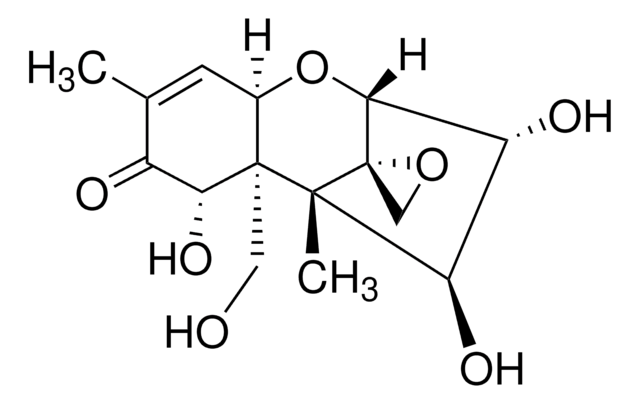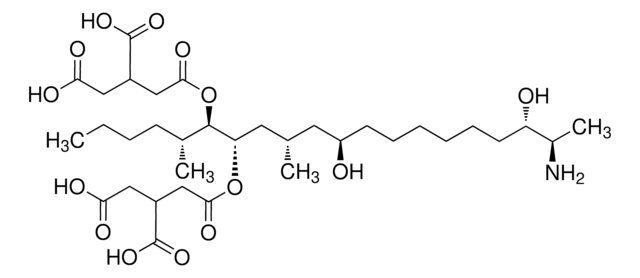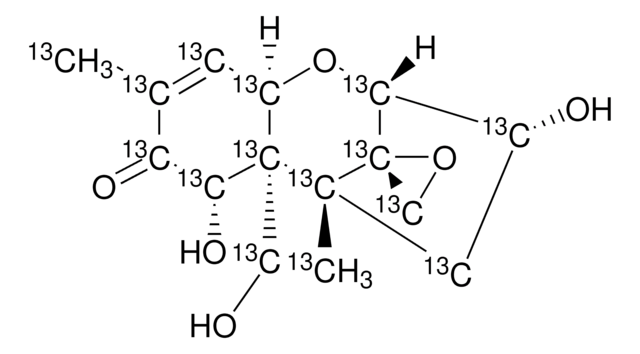Wichtige Dokumente
34135
Deepoxy-deoxynivalenol -Lösung
~50 μg/mL in acetonitrile, analytical standard
Synonym(e):
3α,7α,15-Trihydroxy-trichothec-9,12-dien-8-on, DOM-1
Größe auswählen
About This Item
Empfohlene Produkte
Qualität
analytical standard
Qualitätsniveau
Haltbarkeit
limited shelf life, expiry date on the label
Konzentration
~50 μg/mL in acetonitrile
Methode(n)
HPLC: suitable
gas chromatography (GC): suitable
Anwendung(en)
cleaning products
cosmetics
food and beverages
personal care
Format
single component solution
Lagertemp.
−20°C
SMILES String
CC1=C[C@H]2O[C@@H]3[C@H](O)C[C@@](C)(C3=C)[C@@]2(CO)[C@H](O)C1=O
InChI
1S/C15H20O5/c1-7-4-10-15(6-16,13(19)11(7)18)14(3)5-9(17)12(20-10)8(14)2/h4,9-10,12-13,16-17,19H,2,5-6H2,1,3H3/t9-,10-,12+,13-,14+,15-/m1/s1
InChIKey
ZACLXWTWERGCLX-MDUHGFIHSA-N
Verwandte Kategorien
Allgemeine Beschreibung
Anwendung
Hinweis zur Analyse
Signalwort
Danger
H-Sätze
Gefahreneinstufungen
Acute Tox. 4 Dermal - Acute Tox. 4 Inhalation - Acute Tox. 4 Oral - Eye Irrit. 2 - Flam. Liq. 2
Lagerklassenschlüssel
3 - Flammable liquids
WGK
WGK 2
Flammpunkt (°F)
35.6 °F
Flammpunkt (°C)
2 °C
Persönliche Schutzausrüstung
Eyeshields, Faceshields, Gloves, type ABEK (EN14387) respirator filter
Hier finden Sie alle aktuellen Versionen:
Besitzen Sie dieses Produkt bereits?
In der Dokumentenbibliothek finden Sie die Dokumentation zu den Produkten, die Sie kürzlich erworben haben.
Kunden haben sich ebenfalls angesehen
Active Filters
Unser Team von Wissenschaftlern verfügt über Erfahrung in allen Forschungsbereichen einschließlich Life Science, Materialwissenschaften, chemischer Synthese, Chromatographie, Analytik und vielen mehr..
Setzen Sie sich mit dem technischen Dienst in Verbindung.













